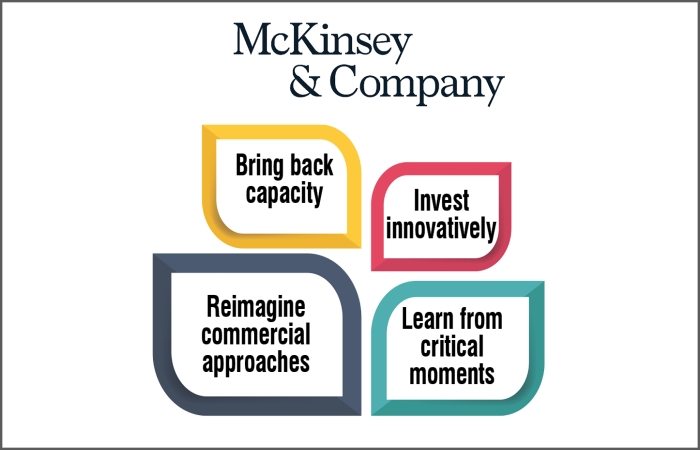This peak-travel season, tourists are returning with a vengeance. But despite promising signs, the tourism industry will likely struggle to capitalise on the imminent spike in travel demand. McKinsey & Company highlights four priority areas that travel companies should focus on to ensure traveller satisfaction.
From airlines and car rentals to hotels and airport restaurants, the entire travel supply chain is already showing signs of strain. Wait times at security checkpoints are stretching into hours at some airports, while popular vacation destinations are facing rental-car shortages. Needless to say, bad news travels fast, and a negative experience can quickly become fodder for a viral video and bad publicity, leading customers to look for alternatives more in their control, including nearby drives and rental properties. While the process is daunting, clear-sighted travel leaders know that preparing their organisations for a surge of travellers is also an opportunity to redefine their value propositions.
Bring back capacity
Many contract and temporary workers in the restaurant industry who were laid off during the pandemic have found other employment and are reluctant to go back to their former jobs, resulting in a labour crunch. Global aviation capacity levels are also still well below pre-pandemic levels as many planes remain in long-term storage and staff remain furloughed. Even though reactivating airline pilots and cabin crews, preparing grounded aircraft for service, and rehiring and training service staff can be pricey, the cost of standing by and doing nothing would be higher.
Invest innovatively to improve the entire customer journey
Remember that the customer experience is shaped across the entire end-to-end journey, from booking to travel to the return home. Even seasoned travellers will have to adapt to new protocols such as digital health certificates and safety measures. Travellers now need more, not less, assistance. Furthermore, certain critical journeys and moments carry a disproportionate weight in consumers’ minds when they plan their next trip. The anticipated volume of traffic during the summer and peak holiday periods will only compound these issues.
Reimagine approaches
Travel companies may rethink their commercial approaches. The profiles of airline passengers and hotel guests will be different: more leisure guests, later booking windows and higher demand for flexible tickets. Historical booking
curves are no longer a good indicator of current behaviour. Travel companies need to use every source of insight they can to anticipate demand and optimise pricing. Flexible pricing models can also ease customer discomfort
with today’s heightened levels of unpredictability. Hotels will need to find new purposes for meeting and conference spaces, which will be slower to fill. Airlines need to figure out how to fill intercontinental Business Class, likely with premium leisure promotions. For all travel companies, the boom may be higher in traveller numbers than in profits, as the most lucrative corporate business has been slow to return.
Learn from critical moments
Aside from streamlining processes and personalising the customer experience, investing in digital analytics can allow companies to identify opportunities to differentiate their services. Companies would also be able to discern emerging trends and hiccups before they turn into nightmares. Industry players, such as online travel agents, may also be a trove of useful insights pertaining to how the external ecosystem is evolving; their experiences may be beneficial for hotels and airlines to explore potential partnerships with them.
 TravTalk India Online Magazine
TravTalk India Online Magazine





